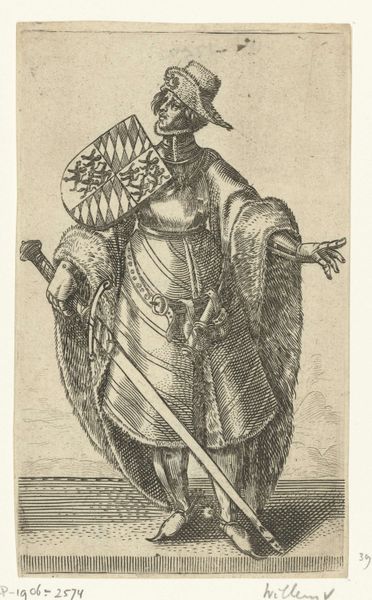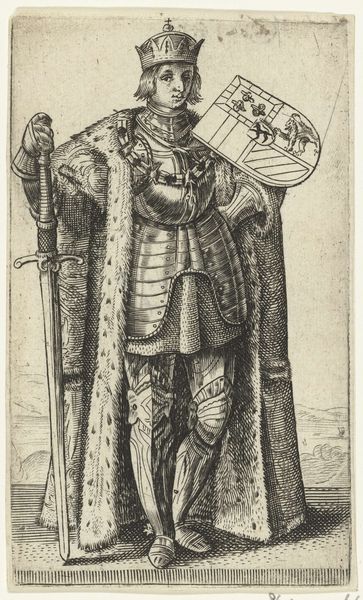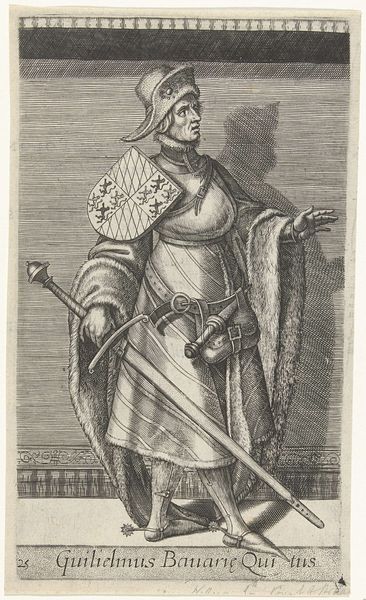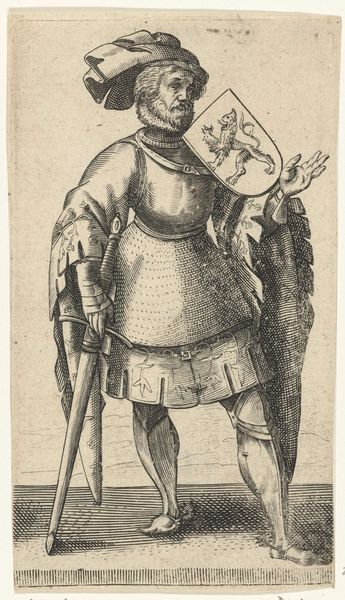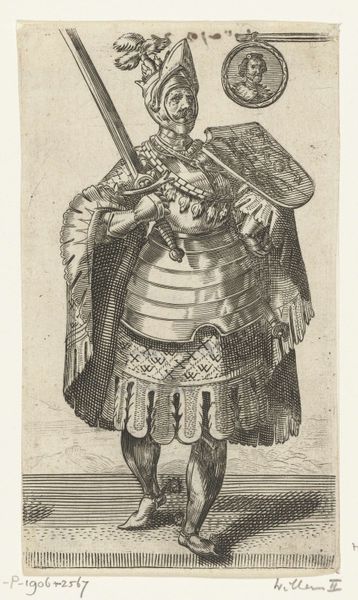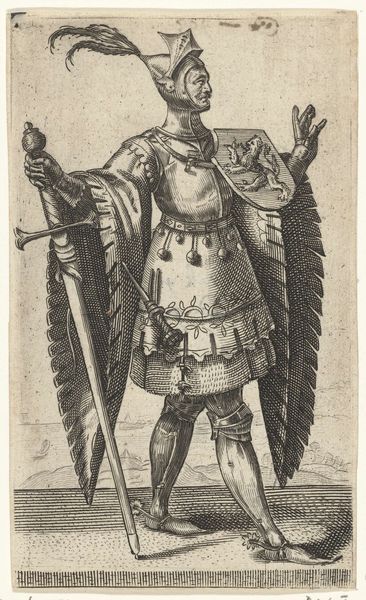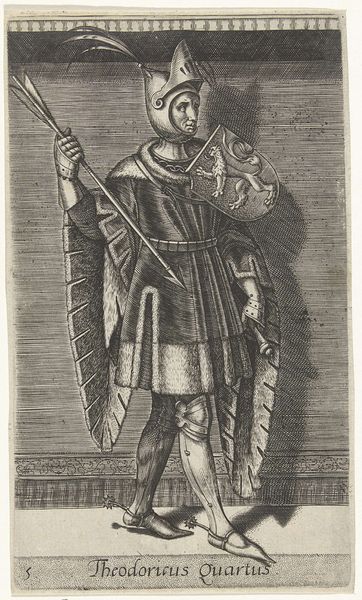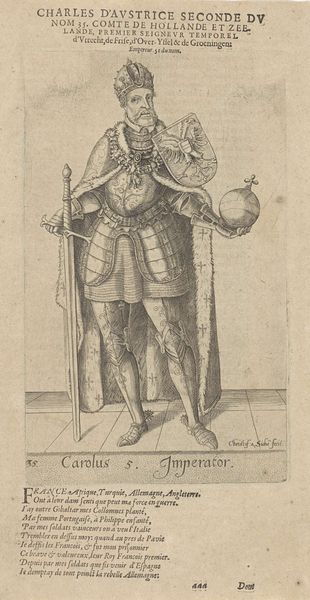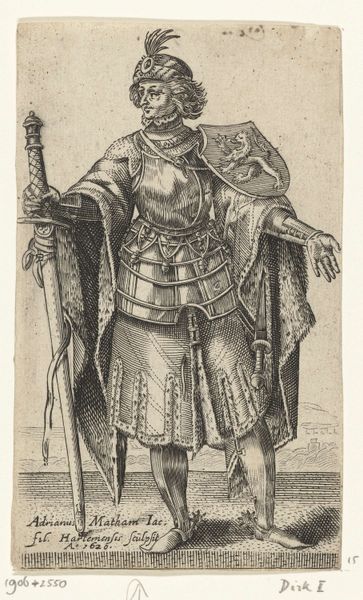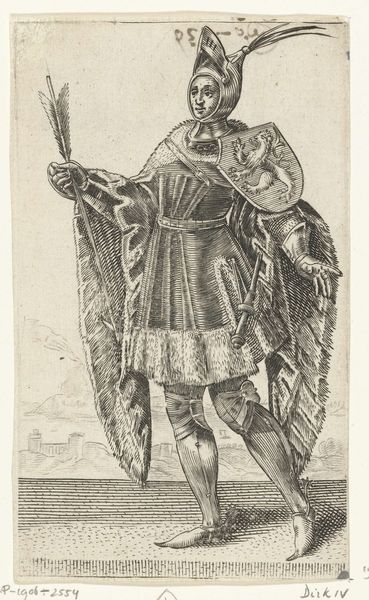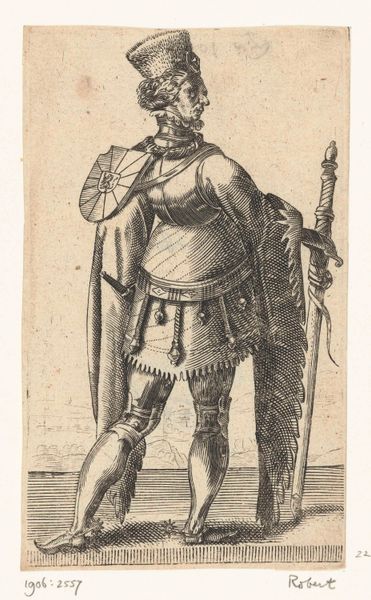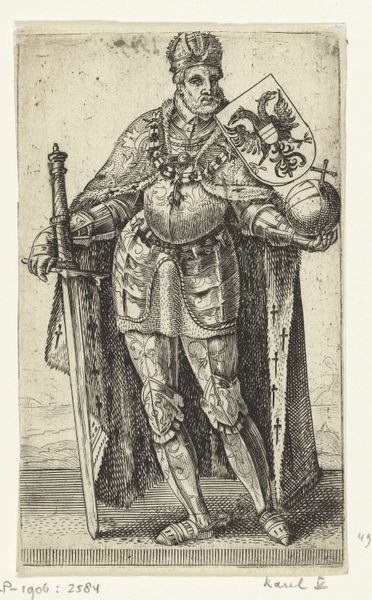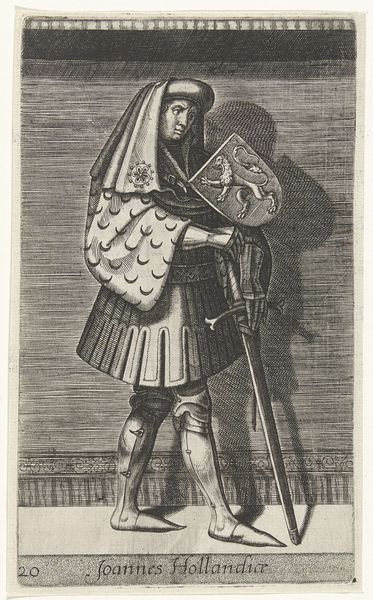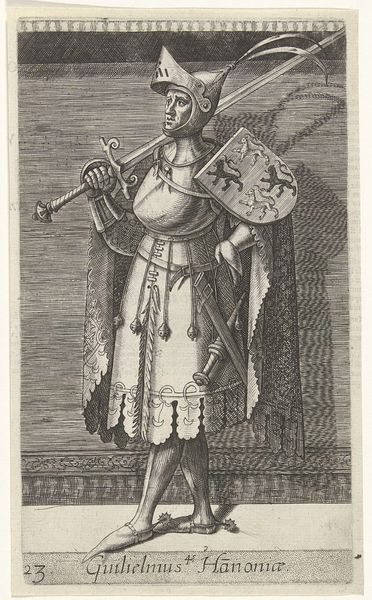
print, etching, engraving
#
portrait
#
medieval
#
baroque
# print
#
etching
#
figuration
#
history-painting
#
engraving
Dimensions: height 130 mm, width 80 mm
Copyright: Rijks Museum: Open Domain
Curator: This engraving, created around 1620 by Adriaen Matham, offers us a glimpse into the imagery surrounding Willem I, Count of Holland. Editor: Immediately, I’m struck by how completely Willem is armored. The detail in the engraving suggests a man encased in power, but I wonder about the burdens of that presentation. Curator: Matham aimed to depict Willem in a heroic light, consistent with the Baroque period's interest in grand historical narratives. The portrait also pulls from the Medieval style as Matham presents a distant figure who died in 1222. Engravings such as these served an important political function in constructing a visual history. Editor: Absolutely. Look at the meticulous detail of the fur-lined cloak, juxtaposed with the rigid armor. The fleur-de-lis on his sword, his regal bearing, all point to a desire to legitimize power and evoke a sense of dynastic authority. It almost romanticizes the military role and reinforces ideas around class. Curator: Such prints, affordable and reproducible, played a vital role in disseminating such idealized images, shaping popular perceptions of rulers and national identity during a time of considerable political upheaval. Editor: Right, what’s particularly fascinating is understanding how these images contributed to constructing the narrative of Dutch identity, and how that narrative may have excluded or marginalized other voices. I’m interested in the impact and influence images of rulers have on ordinary citizens. Does the image bring people together, or divide? Curator: The work’s location here at the Rijksmuseum highlights its place within the established art historical canon, and reinforces the ongoing historical project of crafting Dutch identity. Editor: I agree, and it pushes us to critically examine the narratives being promoted in museums, who these benefit, and who is left out of the narrative. I leave you thinking about how artworks become symbols, laden with both historical context and political significance.
Comments
No comments
Be the first to comment and join the conversation on the ultimate creative platform.
